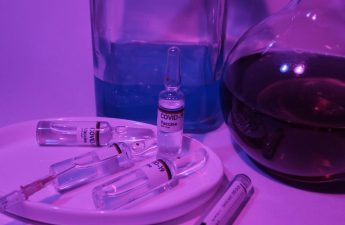The Free Water Protocol enables dysphagia patients to safely drink regular water, improving hydration and reducing dehydration risks, under specific guidelines.
1.1 What is the Free Water Protocol?
The Free Water Protocol is a clinical approach allowing patients with dysphagia to drink regular, unthickened water under specific guidelines. It aims to improve hydration and reduce dehydration risks in those on thickened diets or NPO status. The protocol emphasizes water’s neutral pH and bacterial-free nature, distinguishing it from other thin liquids, which are restricted to minimize aspiration risks and ensure patient safety.
1.2 Purpose of the Free Water Protocol
The purpose of the Free Water Protocol is to address dehydration and non-compliance issues in dysphagia patients on thickened diets or NPO status. By allowing access to regular water under strict guidelines, the protocol enhances hydration while minimizing risks. It provides a structured approach to safely manage water intake, improving patient outcomes and reducing complications associated with inadequate hydration in dysphagia care.

Background and Development of the Free Water Protocol
The Free Water Protocol was developed to address dehydration in dysphagia patients on thickened diets or NPO status, promoting safe water intake under specific guidelines.
2.1 History of the Protocol
The Free Water Protocol was developed to address dehydration and non-compliance issues in dysphagia patients on thickened diets or NPO status. It originated from concerns about the effectiveness of thickened liquids in maintaining proper hydration. Researchers at the Frazier Rehabilitation Institute, led by Kathy Panther, pioneered the protocol, supported by pilot studies like the one at Riverview Health Centre. The protocol emphasizes water’s neutral pH and bacterial-free nature, making it safer than other thin liquids for at-risk patients, while studies have shown improved hydration and reduced complications.
2.2 Key Developers and Contributors
Kathy Panther, a prominent researcher at the Frazier Rehabilitation Institute, is a key developer of the Free Water Protocol. Her work, supported by pilot studies like the one at Riverview Health Centre, has significantly influenced its implementation. Contributions from speech-language pathologists and healthcare professionals have refined the protocol, ensuring safer hydration practices for dysphagia patients, with studies citing over 105 references to her groundbreaking research.

Key Principles of the Free Water Protocol
The protocol permits dysphagia patients to drink regular water under strict guidelines, emphasizing hydration without compromising safety, and ensuring water is the only thin liquid consumed.
3.1 Guidelines for Water Consumption
Patient eligibility includes those on thickened liquids or NPO status, with water allowed between meals, not during or 30 minutes after meals. Mouth care must precede drinking. Emphasis is placed on water being the only thin liquid consumed, adhering to specific safety measures to minimize aspiration risks while improving hydration levels in dysphagia patients.
3.2 Differences Between Water and Other Thin Liquids
Water is unique due to its neutral pH and low bacterial content, making it safer for dysphagia patients compared to other thin liquids like juice, coffee, or milk, which may pose higher risks of aspiration or bacterial contamination, thus restricting their use under the Free Water Protocol.

Benefits of the Free Water Protocol
The Free Water Protocol improves hydration in dysphagia patients, reduces dehydration risks, and enhances compliance by allowing safe water intake, addressing challenges with thickened diets.
4.1 Improving Hydration in Dysphagia Patients
The Free Water Protocol enhances hydration for dysphagia patients by allowing safe, regular water intake. Water’s neutral pH and lack of bacteria reduce risks compared to other thin liquids. Patients can drink freely outside meals, improving hydration levels and reducing dehydration risks, especially for those on thickened diets or NPO, addressing a critical need in dysphagia care.
4.2 Reducing Dehydration and Non-Compliance with Thickened Diets
The Free Water Protocol addresses dehydration by enabling patients to drink water freely, reducing reliance on thickened diets. Many patients find thickened liquids unpalatable, leading to non-compliance. By allowing regular water intake, the protocol improves hydration rates and reduces the challenges associated with adhering to thickened diets, enhancing overall patient outcomes and comfort in dysphagia management.

Implementation of the Free Water Protocol
The protocol involves assessing patient eligibility, establishing clear guidelines for water intake, and monitoring adherence to ensure safety and effectiveness in clinical settings.
5.1 Patient Eligibility Criteria
Eligibility involves assessing patients with dysphagia who can safely drink water without aspiration risks, typically excluding those with severe oral phase deficits or unsafe swallow.
5.2 Role of Healthcare Professionals in Monitoring
Healthcare professionals monitor patients on the Free Water Protocol to ensure compliance and safety. They assess hydration status, watch for aspiration signs, and document progress, adjusting the protocol as needed to maintain patient safety and effectiveness.

Safety and Risks Associated with the Free Water Protocol
The Free Water Protocol carries risks like aspiration, requiring careful monitoring and adherence to guidelines. It’s contraindicated for patients with high aspiration risks.
6.1 Aspiration Risks and Precautions
Aspiration risks exist but are minimized with precautions. Water is safer than other thin liquids due to its neutral pH and low bacterial content. Patients must avoid drinking during meals or within 30 minutes after eating. Proper mouth care and upright head positioning are essential to reduce aspiration risks. Compliance with guidelines is critical for safe implementation.
6.2 Contraindications for Certain Patients
The Free Water Protocol isn’t suitable for all dysphagia patients. Those with severe aspiration risks or unable to follow safety guidelines should avoid it. Patients requiring thickened liquids or with significant oral-pharyngeal dysfunction may not qualify. A thorough assessment by healthcare professionals is necessary to determine eligibility and ensure safe implementation.

Patient Education and Compliance
Patient education is crucial for safe adherence to the Free Water Protocol, ensuring understanding of guidelines, oral care routines, and hydration timing to prevent complications.
7.1 Importance of Mouth Care Before Drinking Water
Mouth care is essential before drinking water to prevent bacterial contamination and aspiration risks. Brushing teeth, cleaning the tongue, and using mouthwash reduce bacteria in the oral cavity. Proper oral hygiene ensures a clean environment for water intake, minimizing infection risks and improving overall safety for dysphagia patients following the Free Water Protocol.
7.2 Strategies for Safe Water Consumption
Patients should drink water between meals, avoiding the 30-minute post-meal period. Sitting upright and using a cup with a lid to reduce spillage is recommended. Sipping slowly and pausing between sips can minimize aspiration risks. Avoiding thin liquids like juice or coffee is crucial, as only water is permitted under the Free Water Protocol guidelines.

Clinical Evidence and Research
Studies like the feasibility trial by K. Panther support the protocol, showing reduced dehydration and improved compliance in dysphagia patients. Research highlights positive clinical outcomes.
These findings demonstrate the protocol’s effectiveness in dysphagia management, emphasizing its role in patient care.
8.1 Studies Supporting the Free Water Protocol
Research, including a feasibility study by K. Panther, demonstrates the protocol’s effectiveness in reducing dehydration and improving hydration in dysphagia patients. A controlled pilot study at Riverview Health Centre highlighted positive outcomes, showing reduced non-compliance with thickened diets. These studies validate the protocol’s safety and efficacy, providing evidence-based support for its implementation in clinical settings.
8.2 Outcomes and Effectiveness in Dysphagia Management
The Free Water Protocol has shown significant outcomes in dysphagia management by enhancing hydration and reducing dehydration risks. Patients report improved comfort and adherence to their dietary regimens. The ability to consume water between meals without complications has made the protocol a valuable tool in managing swallowing disorders effectively.

Comparison with Other Dysphagia Management Strategies
The Free Water Protocol offers a unique approach by allowing regular water intake, unlike thickened liquids, improving hydration and reducing dehydration risks in dysphagia patients effectively.
9.1 Thickened Liquids vs. Free Water
The Free Water Protocol contrasts with thickened liquids by permitting regular water intake, reducing dehydration risks. Thickened liquids, designed to minimize aspiration, often face non-compliance due to unpleasant texture and taste. In comparison, free water is more palatable, enhancing hydration rates without sacrificing safety when adhering to established guidelines, thus offering a more effective solution for dysphagia patients.
9.2 Advantages of the Free Water Protocol Over Traditional Methods
The Free Water Protocol offers several advantages over traditional thickened liquid diets, primarily by improving patient compliance and hydration. It reduces the risk of dehydration and aspiration-related complications. Additionally, it enhances quality of life by allowing patients to drink regular water, which is more palatable and easier to consume. This approach also decreases the burden of continuous thickening, making it a more practical and effective solution for dysphagia management.
Practical Application and Tools
Assessment tools and documentation templates guide healthcare professionals in implementing the protocol, ensuring patient suitability and safe water consumption practices are effectively monitored and recorded.
10.1 Assessment Tools for Patient Suitability
Specific clinical assessments and tools, such as questionnaires or evaluation forms, are used to determine patient eligibility for the Free Water Protocol. These tools evaluate the patient’s ability to adhere to safety guidelines, such as avoiding water during meals and performing proper mouth care. Healthcare professionals utilize these assessments to ensure patient suitability and safe implementation of the protocol.
10.2 Documentation and Monitoring Templates
Standardized documentation and monitoring templates are essential for tracking patient adherence to the Free Water Protocol. These templates include progress notes, hydration levels, and adherence to safety guidelines. Healthcare providers use these tools to monitor compliance and adjust the protocol as needed, ensuring patient safety and effective hydration management throughout the treatment process.

Future Directions and Potential Modifications
Future directions may include expanding the protocol to other patient populations and integrating technology to enhance monitoring and compliance, ensuring safer and more effective hydration management.
11.1 Expanding the Protocol to Other Patient Populations
Expanding the Free Water Protocol to patients with conditions like neurological disorders or geriatric populations could enhance hydration management. Research into its applicability for pediatric patients and those with chronic diseases may further broaden its scope, ensuring safer and more effective hydration strategies for diverse patient needs and improving overall health outcomes.
11.2 Technological Innovations in Monitoring Compliance
Technological advancements, such as wearable sensors and mobile apps, can enhance monitoring of water intake and adherence to the Free Water Protocol. Digital tools enable real-time tracking of hydration levels, while electronic health records can streamline documentation. These innovations improve compliance monitoring, reduce risks, and provide actionable insights for healthcare providers, ensuring safer and more effective hydration management for patients.
The Free Water Protocol offers a safe, effective approach to hydration for dysphagia patients. For detailed guidelines and implementation strategies, access the full Free Water Protocol PDF.
12.1 Summary of the Free Water Protocol
The Free Water Protocol allows dysphagia patients to drink regular water under specific guidelines, reducing dehydration and improving hydration compliance. It emphasizes safety, monitoring, and patient education, ensuring safe water intake while minimizing aspiration risks. The protocol is particularly beneficial for those on thickened diets, offering a balanced approach to hydration management.
12.2 Accessing the Full Free Water Protocol PDF
The complete Free Water Protocol PDF is available for healthcare professionals and patients, providing detailed guidelines and research. It can be accessed through medical institutions, dysphagia research websites, or by requesting it directly from the authors or affiliated organizations. The PDF offers comprehensive insights into implementation, safety, and patient education for effective hydration management in dysphagia care.



